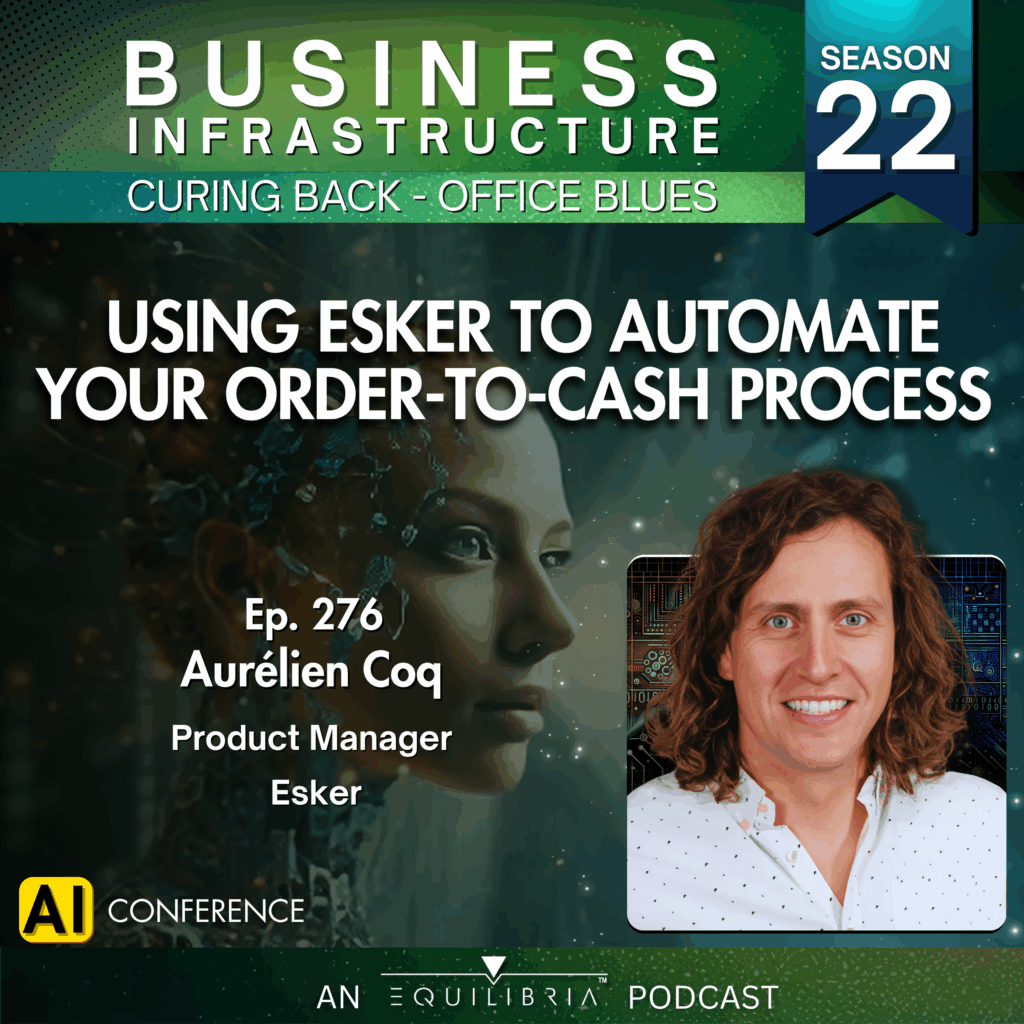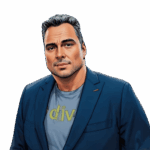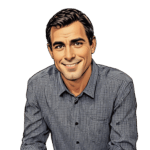Transcript
Is your small business growing faster than you can keep up with? It might be time to grow your team, document key processes, and make sure you’re using the right technologies to scale up operations. In other words, your company might need business infrastructure. At Equilibria, Incorporated we specialize in building business infrastructure.

Equilibria is proud to sponsor this special season which features an AI audio conference to advance your knowledge of business infrastructure. We hope you enjoy this episode!
Welcome back to Season 22 of the Business Infrastructure podcast. I’m Alicia Butler Pierre and on this show, we share operational tips, strategies, and tactics to help you cure any back-office blues you might be experiencing.
Our next speaker is ready at our AI audio conference. This presentation will be a little different because it will it feature a demo of an AI tool that the company actually created itself. This tool is guaranteed to help you streamline your process for accepting new orders from customers all the way to accepting payment for that order and providing support afterward. This process is commonly known as Order-to-Cash and although you may not call it that, trust me it applies to your organization!
As a reminder, I’ll provide live commentary throughout this presentation so that you can follow along. Before we start, I must also remind you of our disclaimer – the nature of AI technology is changing fast, so it’s possible some of the information in this episode might be dated since the original presentation. We encourage you to learn what you can, test it, and most importantly have fun! And now for our next presentation….
This is Episode 276 – Using Esker to Automate Your Order-to-Cash Process with Aurélien Coq.
Welcome to my AI presentation. My name is Aurélien, I’m the product manager of Esker and we’re going to talk about how using AI can automate your Order-to-Cash cycle to improve your process efficiency. So, let’s get started.

I have an engineering background, but I was more doing tech support, not really software development, even though I studied software development and telecommunications here in Lyon and actually also in the US. I was an exchange student at the University of Iowa back in the days.
That’s a long story. But to make it short, I was swimming, and the Iowa team had a swimming team. So, I was part of a team for one year. I was a Hawkeye, and yeah, that’s how I got to visit Iowa, I guess.
We have another room packed with people. Although Aurélien just mentioned his background in software development and communications, it appears he also has a degree in computer science. I can see that information on the slide from his presentation he’s currently displaying on a large screen. He just advanced to the next slide…he’s about to start talking about how his interest in AI began.
My interest was more around computer science, doing something with computers and helping people in the end. But I didn’t realize there was AI behind…whether you called it AI at the time or not, to me, the interest, really. I started working at Esker as a tech support engineer. I actually moved to the U.S. at some point. I also went back to the Midwest in Madison, Wisconsin, came back to France, and that was around 2010, where really Esker was doing AI, even though we were not advertising it because it wasn’t like really cool or valuable from a marketing perspective.

But we actually were doing some machine learning. So, algorithms to improve recognition of orders. And we’re going to get into that later I guess. And yeah that’s also when I moved from technical support to really being a product manager because when you’re in tech support, while you help people, but you feel like sometimes you’re a bit limited. And if the product was a bit better, then you wouldn’t have so many technical support issues. So that was kind of my idea to get my knowledge and bring that to product management and make sure that we make better products for our customers.
That’s an astute observation! Improve products on the front end to minimize back end support. Those of us in the audience now see a slide with a prominent display of the Esker company logo. Esker is the tech company that Aurélien started working at almost 20 years ago.
Esker is a French company, but international. We do have offices in the US. In Madison, also in Denver, and globally speaking, we automate the back-office processes. So, our goal is really to facilitate the life of customer service people or accounting people in finance and make it easier for them to work with their customers, and suppliers and really to empower the employees with AI-driven technology.
We gave it a name. It’s called Esker Synergy. This is our engine, and it uses different technologies. So, AI, I think it’s been there for a long time, since the 50s, since the beginning of the computers. And the goal is to simulate the human intelligence. Esker Synergy has different technologies embedded within. So, we have some machine learning, we have some deep learning that are also referred to as neural network. And we also leverage Chat GPT, using the product from Microsoft Azure. We use a combination of own technology. Sometimes we use some external technology and once again we want to empower the users.

Aurélien is now reducing the size of his presentation so that he can enlarge the screen showing the Google Chrome web browser. He’s typing…Esker.com. The first thing that now appears on Esker’s website is a message that says, “Order-to-Cash Automation…Uniting the People and Processes that Impact Cashflow and Customer Experience.” There’s also a button to click in order to watch a demo.
In terms of real applications, it can capture data and verify data. So, the most maybe basic or simple example, it’s possible to capture data from an order. So, you receive an order in an email or as a PDF attachment and as a customer service rep most of the time you need to retype all of that in your ERP system. With AI you can capture the customer, the shipping address, the PO number, the materials ordered, the quantities, and create that automatically with verifications, put some alerts if the quantity doesn’t look usual, for instance.
So that’s one example and then we apply that to really capturing data and validating data, but also proposing things to users. That’s called perspective or predictive analytics. For instance, you can…more in finance, another example – most of the companies do some credit management, so they manage credit for their customers and at some point, if the customer’s order too much and haven’t paid enough of their invoices, they might block the orders.
We are able to, based on the history of orders and payments, say this is the credit limit that you should use to make sure that your business runs but without putting too much risk or down the Order-to-Cash cycle. We also have analytics to say this is the most likely pay date for this invoice this customer is a bit late, but most likely they’re going to pay within three days. So, you don’t have to call them actually. But this one they are very late and most likely they are not going to pay unless you call them. So you should put your efforts into that. So that’s really an assistant, that’s the way we put it sometimes – it’s really there to assist the users in that job.

Okay…so there was a lot packed into those examples that Aurélien shared. I heard him describe three distinct tasks that Esker Synergy’s AI can assist with – data collection, data entry, and payment prediction. It’s starting to make sense how all these tasks all roll up under an overall Order-to-Cash process. I’m raising my hand to ask a question.
Would you mind explaining what does Order-to-Cash mean? Because there might be some people who are listening and they may be wondering what on Earth does that mean?
Order-to-cash – it’s the process of working with your customers. They’re going to ask you questions, maybe “What is the description for this product? Do you have availability? What is the price?” Then they’re going to place an order. So that’s usually the beginning of a cycle and then all the way to the cash. So you’re going to deliver the product or services, deliver an invoice and in the end get your invoice paid. So that’s Order-to-Cash.
And with all of the hiccups that can happen along the way. That can be plenty. Your customer is asking for something that you don’t do. There’s a mistake in the order. He asked for, I don’t know, ten boxes, but you deliver ten pallets and he’s not willing to pay because of a disagreement on the price, because he doesn’t have any money. I mean, there could be plenty of reasons. So, all of that is the Order-to-Cash cycle. At Esker, we actually manage both the Order-to-Cash cycle with customers and the Source-to-Pay cycle, which is the other side when you work with your suppliers.
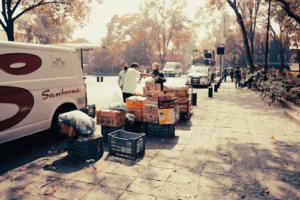
In case you’re wondering, Accounts Receivable is a process you already have. It actually is a part of the overall Order-to-Cash process. As Aurélien mentioned the Source-to-Pay process, he scrolled to the very bottom of Esker’s website. There in the footer we can see a link for Source-to-Pay as one of their solutions. He clicked that link and it opened up a new page explaining how this solution can transform your accounts payable activities.
Source-to-Pay is just, let’s say the opposite. So, you’re a company and you’re working with your suppliers. It could be any supplier, it could be the electricity bill, but also suppliers that help you build your product or services. And you’re going to source your expenses, your purchases, and then you’re going to place an order, and then you’re going to receive an invoice, probably approve the invoice, make sure that it matches with what was ordered and delivered and in the end, pay. So once again, it’s the same process just you see it from the supplier’s point of view.
A facilitator in the room is walking toward someone who has a question. He just handed him the mic so we can all hear that question.
It doesn’t replace those tools. And we try to play nice. I mean, we play nice with everybody. Our targets are usually not really small businesses, but at least a bit larger than that. And usually, we also have an ERP such as SAP or Oracle, and we integrate with all of those, but we’re not replacing them. We’re kind of the glue that holds everything together that makes sure that you have a smooth exchange from the documents that you receive from your customer and your internal systems because there’s always integration gaps with the systems.
And this is where we have a lot of manual tasks such as retyping data, which is not valuable for anybody, and error prone, and so we’re trying to really remove that. But we do integrate with the CRM with ERP, and every customer environment is different. We have to be very flexible. Some companies, then there are some mergers and acquisitions, and they end up having two different systems, but you have to play with both until there’s a migration, which could take years to actually take place. So, yeah, we have to cope with the I.T. diversity.
That’s an interesting point. I have another question for Aurélien.
If we think of it as this digital assistant, is it that Esker Synergy might say, “Okay, I noticed that you have an invoice that is maybe five days overdue.” Is there some type of a chat feature or is it sending alerts?
This is where yeah, you need to understand really how it works. This is maybe where I can show you the demo. This is an example. So, this one is you place yourself in the shoe of a customer service rep, and you’re getting a question from a customer about Where is my order? The customer ordered and they want to know where the order is.
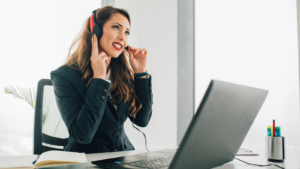
Aurélien just opened the Esker Synergy AI tool so that we in the audience can follow along with the example he’s about to demonstrate.
We’ve got the customer’s email right there on the right. First of all, we’ve been to analyze it and say, “Oh, there’s a negative sentiment, so be careful.” It’s been automatically classified. It’s an order question. We were able to integrate with the systems, that’s what I was mentioning, and retrieve the shipping information. And from there, the assistant proposes a template-based answer.
And we can even go further and generate it with Chat GPT, for instance, in this case, it would be probably a bit better because the customer sentiment was negative. With Chat GPT you can take that into account while if you just use the templates, it’s just going to be template-based and maybe not fully appropriate to this particular example. So that’s really the assistant proposing an answer to the customer service rep.
Okay let me explain what Aurélien just showed…in the Esker Synergy AI system, there is a screen with a customer profile. It contains different fields that you would expect to see in something like a database – it has the customer’s name, order number, and other information pertaining to a specific order, like the shipping date. If a customer service rep were looking at this screen based on the customer’s name or order number, a pop-up message could appear to let you know if the tone of a customer’s email is negative.
Because Esker is synced with other systems that a company might be using, it’s automatically able to retrieve more detailed shipping information about a customer’s order. Further down the screen is an area that gives you the option to respond to the customer’s inquiry using Chat GPT. In this case, Chat GPT can automatically generate responses on that customer service rep’s behalf because of the internal data it receives from the company that the rep works for. Hopefully that makes sense.
So, in this case, we got an order status request, we identified the PO number and then we were able to query the systems and to say, “Do we have a shipment information for this one?” And we did, and let’s say the shipment got delayed. It was planned for, I don’t know, October 1, but only shipped on October 10 and from there we provide all of this data to Chat GPT to generate just a nice answer. But Chat GPT doesn’t invent anything. We just make sure that we provide the data and it’s just going to be able to put it in a nicer way than a template-based, which necessarily doesn’t fully take into account the actual customer’s email or tone or whatever.
Seeing this example truly illustrates the role business infrastructure plays in this. Business infrastructure is an operational system for linking people, processes, and tools to ensure sustainable, repeatable, and profitable growth and scale. Aurélien has nicely demonstrated the Esker Synergy AI tool itself and how it can dramatically streamline the Order-to-Cash and Source-to-Pay processes, but I have another question for him regarding the people aspect of business infrastructure.
Can you speak a little bit about it truly being an assistant? And it’s not designed to actually replace people, but rather to enhance and help them work more efficiently and more productively?

Yes, and that’s really important. I think it’s really our philosophy to say the AI or the robot, if we’re talking about RPA, they’re not here to replace people. They’re really here to change the way they work, to simplify their life, to make it easier for them to remove all of the tasks that are just tedious such as answering an email, gathering the data, connecting to a system, retrieving this information, writing the email.
So really, our goal is to empower the users, the employees. And we think by empowering the employees, then they’re going to be more happy at work, they’re going to stay, it’s going to be easier to recruit people. I mean, there’s a lot of benefits and in the end, eventually they will serve customers or suppliers better because if all they do is type data in an ERP system or an accounting system, then they don’t have time to provide advice, just go on a customer visit, do something more on a human basis, I guess.
Something else I thought about, if I may, really quickly, because I know as a person that has called many tech support numbers over the years, it’s always frustrating when you get a different response. I would imagine that this ensures that there is more consistency now in whatever response or answer is given to a customer’s question or query, right?
Yeah, that ensures both consistencies, but yet we have the personal touch, the human touch, because we don’t want to go full automated at this point. Let’s say, once again, it’s really not our philosophy. And I know some customers, they ask us, “Oh, can you go 100%?” This is not what we’re recommending because we’re saying, “Well, if you automate 95% of your process, that’s 95% gain. Okay, 100% is better. But you have to also recognize the risk. There’s always a risk associated with giving a bad answer to your customer and making them even more upset.”
Someone just asked Aurélien if he had time to share another example. He’s now focusing his attention back on the laptop screen.
So, this is an example. This time we got an order. It’s all demo data from Paxton company. It’s a free text order. So, it’s not a PDF. It’s really, let’s say, a very small customer placing an order and saying, I want those products. And with NLP [Natural Language Processing] technologies, we’re able to identify the date and automatically fill in as well as the items. So, we have the items, the quantities, the unit of measures, and they all come from the email. And we even have another example, trickier. So, the customer just sends an email, but doesn’t even provide the items code.
Based on the description on the email, we’re able to say, “Oh, apparently this customer is needing the light bulbs, 40 watts frosted, whatever, with product code L 40 F.” And so, we still put a warning to the users to saying, this is just what we inferred, what we think this is. It might be incorrect, you might want to check, but at least we’ve been able to propose something. It’s a lot easier to just validate and then approve than retype everything – have to guess, have to do the queries in your internal systems to say what kind of product could it be? So that’s another example of what we can do. And the same we can infer the quantities and unit of measures in this case.
Okay, someone else just stood up. She’s bringing up something that Aurélien mentioned earlier – the fact that Esker Synergy AI is not for smaller businesses. She’s asking where smaller businesses can still get this type of help but on a smaller scale.
We’ve got plenty of resources on our website we released recently an eBook about how AI can help customer service departments, and the title is, How AI Help You. So, How Can I Help You? That’s a joke, which I didn’t get at first, but I remember the writer, she came to me and said, “Do you get the joke? I’m like, “No, I don’t get it.”
I don’t get it either. Oh wait, now I get it! How AI Help You? When it’s said in the same cadence and tone as “How Can I Help You?”…I guess it is a clever play on words. Okay, back to Aurélien…
Sometimes there are ways to start small. And this is also one of our philosophies at Esker. We’ve been doing Agility internally and also for our projects with our customers. And the whole idea of Agility is you start small and then you expand the scope. So at least you get something. You get some benefits first you make sure that the product is in the hands of the users and that you don’t imagine something that doesn’t even exist or doesn’t have a good ROI.

For instance, you could say, “First of all, I’m just going to get the emails. I’m not even going to integrate with the systems…” because what I showed you was kind of the dream where it’s able to retrieve the shipping information and provide it. But let’s say step one, you retrieve that, you classify your emails. That’s just out of the box, just by providing descriptions, GPT is going to be able to say, this is another status request, this is an invoice question.
So that’s step one. You classify, you do the sentiment analysis. It’s easy to implement in a way, and then maybe you want to go further and say, “Oh, I don’t know, I receive a ton of requests for quotations and maybe I need to go further on those because it’s taking a lot of time.” So maybe for those I will have a system that integrates and connects to my price list somehow and is able to generate the answers automatically or semi automatically. This is usually what we recommend, is this phased approach where you start with your biggest pain, you get some benefits, people see the value, and then you expand from there.
Does that make sense to you? If not, then I’ll use this podcast as an example. We frequently receive inquiries to be a guest but there are only certain times of the year when we accept new guests on the show.
According to what Aurélien just described we could classify these types of emails as “Guest Inquiry.” From there, we can work with someone to build an AI model where we have an integration with Chat GPT to feed it data so that it will begin to recognize when an email is in fact a guest inquiry. The sentiment analysis, in our case, could include whether someone wants to be a guest or is a PR firm and wants to recommend someone as a guest. Chat GPT can then generate an automated response based on whether or not we are actively accepting new guests.
Aurélien is starting to address some of the concerns that many of us have with this level of automation.
There’s always a lot of fears. And actually, I wanted to talk about that because this is why I’m wearing this T-shirt today. I don’t know if you got the reference, but it’s a reference to Blade Runner. So, in Blade Runner, the robots are Nexus Six. A lot of Hollywood movies and AI usually doesn’t go well. So, Blade Runner doesn’t go so well. Terminator, not so well. The Matrix, I mean, all of them. So, I mean it’s usually a robot take over and kill everybody in the end.
I’m not saying there are not any risks to AI. And I’ll come back to that. We need to be careful. But to me, the biggest fear could be AI is uncontrollable. That’s not really true. You can put some controls. You need to make sure that, for instance, the data is private. And going back to what I was saying before that you have some human control. So that’s why in our case, we always have human supervision at least until you feel comfortable enough with taking the risk of going fully automated.

And the other fear, usually for employees is, The robot is going to steal my job. The fear is common, and it makes sense in a way. And the way we see it, it’s going to transform the jobs, it’s going to remove the parts that are not so interesting. So necessarily some jobs are going to disappear or some roles at least, and you’re going to have to switch. But to me, this is for the better. And the example that I was taking was more around customer service people.
So, we have some examples from our customers where customer service reps were just typing a lot of data manually and they were afraid a bit when Esker was implemented. But after a few months, they realized, Oh, now I have much more time to actually serve my customers, to talk to them on the phone, to go visit them. And it’s more career path, so I can evolve to be an inside salespeople one day. So that really changes the perspective.
And I also wanted to share something else, which was even though it’s biased, it’s a study that we did with a research company called APQC a few years ago, which was talking specifically about layoffs and what our customers, or customers implementing automation in general did with the time they gained from automation. And only 2% of companies said, “We let go some people.” Most of the companies said, “Well, we had people that we could reuse in other departments, in other roles.” So, it really matches what I said before.
Well, there you have it folks. If you want to leverage AI to automate the way you receive money from your customers and pay money to your vendors, then,
1. Focus.
2. Use a phased approach and
3. Re-engineer some of the existing roles in your company so that you don’t lose valuable people and train them accordingly!
I’m sure you can hear from the applause that people are excited about Aurélien’s presentation. Oh, wait, he’s still on the stage. I think he has something else he’d like to say.
Focus on what is more interesting. Automation is a journey. Thanks a lot.
Merci beaucoup, Aurélien and yes, you’re right. Automation is a journey. Thank you so much for showing us all that Esker Synergy can do. And thank you for listening!
If you enjoyed this episode, then please subscribe and give us a five-star rating and review. You can also watch the video version of this interview, as well as access links to Esker’s website and the resources Aurélien mentioned at BusinessInfrastructure.TV. That’s BusinessInfrastructure.TV.

We hope you learned some actionable things to start improving your company’s back office operations. Coming up in the next episode of our AI audio conference is another product demo from someone who sold one of her companies to Bill Gates.
Be sure to come back to the place wherever you’re listening to this episode, so that you don’t miss that demo! Until then, remember to stay focused and be encouraged. This entrepreneurial journey is a marathon and not a sprint.
This episode was produced by me, Alicia Butler Pierre. Audio editing by Olanrewaju Adeyemo. Additional voiceovers by Kenya A. Moses and Clarence Levy III. Original score and sound design by Sabor! Music Enterprises. Video editing by Gladiola Films. A special thank you to Grant Revilla for creating the show notes.
This is the Business Infrastructure – Curing Back-Office Blues podcast.


